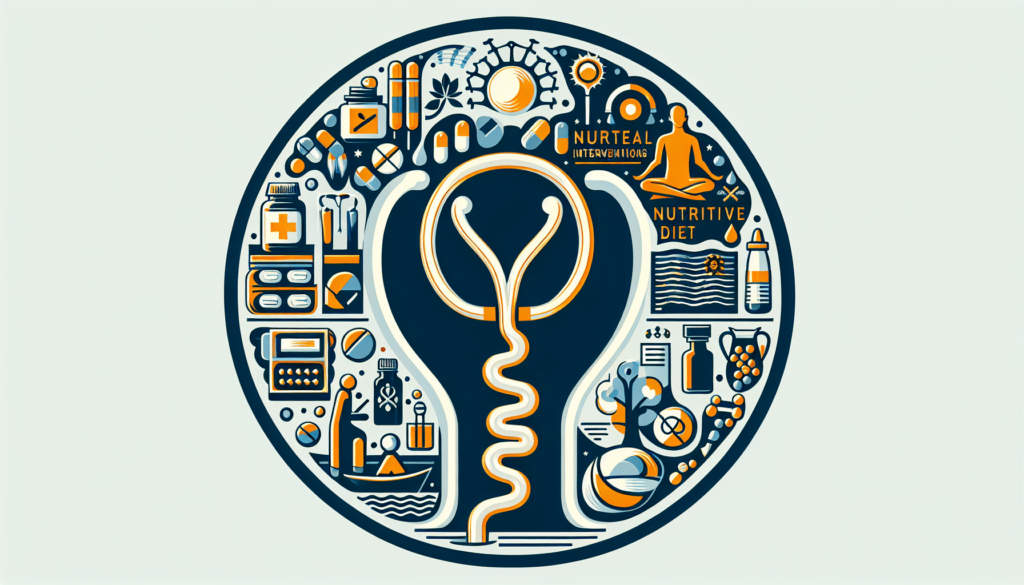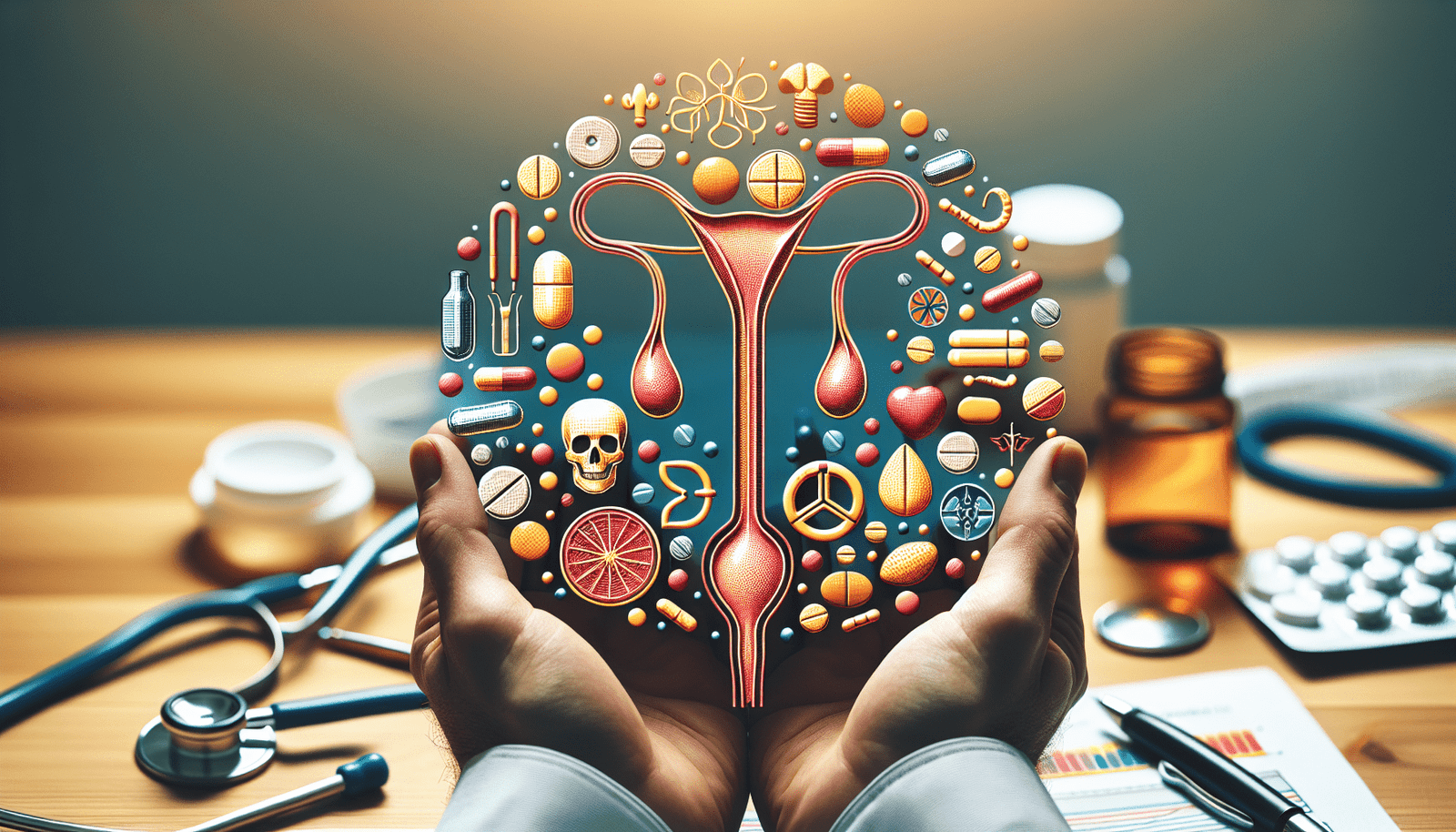If you’ve ever experienced the discomfort of a ureteral stent, you’d know that managing the pain becomes a top priority. But fear not, because in this article, we will explore various effective strategies to alleviate and manage ureteral stent pain. Whether you’ve just had the stent placed or have been living with it for a while, we’ve got you covered with tips and techniques that will help ease your discomfort and get back to living your best life. So sit back, relax, and let’s dive into the world of ureteral stent pain management together.

Understanding Ureteral Stents
Ureteral stents are small, hollow tubes made of flexible material that are placed in the ureter, the tube that connects the kidneys to the bladder. These stents serve an important purpose in urology by helping to promote urine flow and relieve obstructions or blockages in the urinary tract. They are typically inserted during surgical procedures or diagnostic tests and can remain in place for a temporary or permanent basis, depending on the patient’s specific needs.
What are Ureteral Stents?
Ureteral stents are designed to provide support to the ureter and maintain its structural integrity. They can be used in a variety of medical conditions, including kidney stones, urinary tract infections, ureteral strictures, and tumors. The stent acts as a conduit, allowing urine to pass from the kidney to the bladder, bypassing any obstructions or blockages that may be present.
Why are Ureteral Stents Placed?
Ureteral stents are placed for several reasons. They can help relieve urinary obstruction, promote urine flow, and alleviate symptoms such as pain and discomfort. In addition, stents can assist in the healing process after surgical procedures by providing support to the ureter and preventing complications such as leakage or narrowing. They also play a crucial role in the treatment of kidney stones, helping to facilitate the passage of stones and prevent further blockages.
How do Ureteral Stents Work?
Ureteral stents work by creating a pathway for urine to flow from the kidney to the bladder. The stent is inserted into the ureter, with one end positioned in the kidney and the other end in the bladder. This allows urine to bypass any obstructions or blockages and ensures that it can be properly drained from the body. The stent’s design allows for flexibility and movement, which minimizes the risk of occlusion and improves overall urinary flow.
Types of Ureteral Stents
Temporary Stents
Temporary stents are used when a short-term solution is needed to address urinary obstructions or facilitate post-operative healing. These stents are typically made of biocompatible material and can remain in place for a few days or weeks, depending on the patient’s condition. Temporary stents are often used in surgical procedures, such as stone removal or ureteral dilation, where they provide support and prevent complications during the healing process.
Permanent Stents
Permanent stents, also known as indwelling stents, are used in cases where long-term or ongoing urinary drainage is required. These stents are designed to remain in place for an extended period and can be left indefinitely, although they may require periodic replacement or maintenance. Permanent stents are commonly used in chronic conditions such as ureteral strictures or recurrent blockages.
Differences between Temporary and Permanent Stents
The main difference between temporary and permanent stents lies in their intended duration of use. Temporary stents are designed for short-term relief and are often removed once the underlying issue has been resolved or the patient has healed. On the other hand, permanent stents are meant for long-term management of chronic conditions and can stay in place for extended periods. The choice between temporary and permanent stents depends on the patient’s specific needs and the nature of their condition.
Causes of Ureteral Stent Pain
While ureteral stents serve an important function, they can also cause discomfort and pain for some patients. Understanding the potential causes of stent pain can help patients and healthcare providers manage and alleviate these symptoms effectively.
Physical Irritation
One of the most common causes of ureteral stent pain is physical irritation. The presence of a foreign object in the urinary tract can cause discomfort, especially during movement or when passing urine. The stent can rub against the walls of the ureter, leading to irritation and pain.
Bladder Spasms
Bladder spasms are another common cause of stent-related pain. The stent’s presence can trigger spasms in the bladder, resulting in sharp, cramp-like pain. These spasms can be exacerbated by factors such as dehydration, bladder infections, or certain medications.
Inflammation
Inflammation of the ureter or surrounding tissues can occur as a response to the presence of a stent. This inflammation can lead to pain and discomfort and may be intensified if the stent becomes dislodged or migrates within the urinary tract.
Infection
In some cases, stents can become a source of infection. Bacteria can adhere to the stent’s surface, leading to urinary tract infections. These infections can cause pain and other symptoms such as fever, chills, and increased urgency to urinate.
Urinary Tract Obstruction
While stents are primarily used to relieve urinary tract obstructions, they can occasionally be the cause of blockages themselves. If a stent becomes encrusted or displaced, it can hinder urine flow and lead to pain, discomfort, and potentially serious complications.

Symptoms of Ureteral Stent Pain
Ureteral stent pain can manifest in various ways, and understanding the symptoms can help patients identify and address the discomfort effectively.
Lower Abdominal or Back Pain
One of the most common symptoms of stent-related pain is lower abdominal or back pain. This pain can range from mild and intermittent to severe and constant, depending on the individual and the underlying cause of the discomfort.
Urinary Urgency
Patients with stents may experience an increased sense of urgency to urinate. This urgency can be accompanied by discomfort or mild pain, and patients may feel the need to empty their bladder frequently.
Blood in Urine
In some cases, stents can cause irritation or damage to the urinary tract, leading to the presence of blood in the urine. Patients may notice pink, red, or brown discoloration, which should prompt further evaluation by a healthcare professional.
Frequent Urination
Ureteral stents can sometimes lead to increased urination frequency. This can be attributed to factors such as bladder irritation, inflammation, or a sense of incomplete emptying due to the stent’s presence.
Burning Sensation During Urination
A burning sensation or discomfort during urination can be another symptom of stent-related pain. This may be due to physical irritation or the presence of inflammation in the urinary tract.
Preventive Measures
While it is not always possible to completely eliminate stent-related pain, there are several preventive measures that patients can take to minimize discomfort and manage their symptoms effectively.
Fluid Intake
Staying properly hydrated is essential for patients with ureteral stents. Drinking an adequate amount of water can help flush out bacteria, reduce the risk of infections, and promote overall urinary tract health.
Maintaining Proper Hygiene
Maintaining good hygiene practices can help prevent urinary tract infections and minimize discomfort. Patients should be diligent about cleaning the stent site and practicing proper hand hygiene, especially before and after using the bathroom.
Avoiding Strenuous Activities
Engaging in strenuous activities or intense physical exertion can exacerbate stent-related pain. Patients should try to avoid lifting heavy objects, straining, or participating in activities that put excessive pressure or strain on the abdominal and back muscles.
Using a Heating Pad
Applying a heating pad or warm compress to the lower abdomen or back can provide temporary relief from stent-related pain. The heat helps relax the muscles, alleviate spasms, and promote overall comfort.
Medications for Ureteral Stent Pain
There are several medications available for managing stent-related pain. The choice of medication depends on the individual’s pain level and any underlying conditions they may have.
Nonsteroidal Anti-inflammatory Drugs (NSAIDs)
NSAIDs, such as ibuprofen or naproxen, can be effective in reducing inflammation and alleviating mild to moderate stent-related pain. These medications work by blocking the production of prostaglandins, which are responsible for pain and inflammation.
Opioids
For patients experiencing severe or persistent pain, opioids may be prescribed. These medications are potent pain relievers that work by binding to opioid receptors in the brain, blocking pain signals and providing relief. Opioids should be used under the supervision of a healthcare professional due to their potential for side effects and addiction.
Alpha-blockers
Alpha-blockers, commonly used in treating conditions such as enlarged prostate, can also be helpful in managing stent-related pain. These medications relax the muscles of the ureter, reducing spasms and promoting smoother urine flow.
Antispasmodic Medications
Antispasmodic medications, like oxybutynin or flavoxate, can be prescribed to help relieve bladder spasms and reduce discomfort. These medications work by blocking the signals that trigger spasms in the bladder muscles.
Urinary Analgesics
Urinary analgesics, such as phenazopyridine, can help alleviate stent-related pain by numbing the urinary tract, making urination more comfortable. These medications provide temporary relief and should not be used for prolonged periods.
Alternative Pain Management Techniques
In addition to medications, there are several alternative pain management techniques that can be effective in reducing stent-related discomfort.
Heat Therapy
Applying heat to the lower abdomen or back can help relax muscles and alleviate spasms. Patients can use a heating pad or take warm baths to experience the soothing effects of heat therapy.
Hydrotherapy
Hydrotherapy, which involves immersing the body in warm water, can provide pain relief and promote relaxation. Soaking in a bathtub can help ease stent-related discomfort and offer a sense of well-being.
Acupuncture
Acupuncture is an ancient practice that involves inserting thin needles into specific points on the body. This technique can help alleviate pain and promote overall well-being by stimulating the body’s natural healing mechanisms.
Relaxation Techniques
Practicing relaxation techniques, such as deep breathing exercises, meditation, or guided imagery, can help reduce stress, tension, and muscle spasms associated with stent-related pain. These techniques promote relaxation and improve overall comfort levels.
Breathing Exercises
Engaging in deep breathing exercises can help patients manage stent-related pain by promoting relaxation and enhancing oxygenation. These exercises can be done anywhere and anytime, providing a quick and effective way to alleviate discomfort.
Tips for Coping with Ureteral Stent Pain
Living with ureteral stent pain can be challenging, but there are several strategies that can help patients cope with their symptoms effectively.
Stay Hydrated
Drinking an adequate amount of water throughout the day can help flush out bacteria and promote overall urinary tract health. Staying hydrated can also help prevent complications and reduce the risk of infection.
Maintain a Balanced Diet
Eating a nutritious, balanced diet can contribute to overall health and well-being and may help minimize stent-related discomfort. Including foods rich in antioxidants, vitamins, and minerals can support the body’s healing and reduce inflammation.
Practice Good Bladder Habits
Practicing good bladder habits can help alleviate stent-related pain and promote bladder health. This includes avoiding excessive caffeine consumption, emptying the bladder regularly, and avoiding holding urine for extended periods.
Apply Gentle Pressure to Relieve Discomfort
Applying gentle pressure to the lower abdomen or back can provide temporary relief from stent-related pain. Patients can use their hands or a soft pillow to apply light pressure to the area to soothe discomfort.
Seek Emotional Support
Living with stent-related pain can be emotionally challenging as well. Seeking emotional support from loved ones, joining support groups, or talking to a therapist can help patients cope with the physical and emotional aspects of their condition.
When to Seek Medical Help
While mild to moderate stent-related pain can often be managed with preventive measures and over-the-counter medications, there are situations where medical intervention is necessary. Patients should seek medical help if they experience any of the following:
Persistent or Worsening Pain
If the pain becomes severe, persistent, or worsens over time, it is important to consult a healthcare professional. This may indicate an underlying issue that requires medical attention.
Fever and Chills
The presence of fever and chills, along with stent-related pain, could be a sign of an infection. Prompt medical evaluation is necessary in these cases to prevent complications and ensure appropriate treatment.
Severe Bleeding or Blood Clots in Urine
If there is excessive bleeding or the presence of blood clots in the urine, immediate medical attention is vital. This may indicate a serious complication that requires urgent intervention.
Difficulty Urinating
If a patient experiences difficulty or inability to urinate for an extended period, it is essential to seek medical help promptly. This could be a sign of a urinary tract obstruction or other complications.
Signs of Urinary Tract Infection
Symptoms such as increased urinary urgency, frequent urination, strong-smelling urine, or cloudy urine may indicate a urinary tract infection. Prompt medical evaluation is necessary to prevent further complications and ensure appropriate treatment.
Conclusion
Managing ureteral stent pain is crucial for promoting comfort, reducing complications, and ensuring overall well-being for patients. By understanding the causes and symptoms of stent-related pain, patients can take preventive measures, explore various pain management techniques, and seek medical help when necessary. It is important to follow healthcare providers’ guidance and to communicate any concerns or changes in symptoms to ensure personalized advice and optimal pain management. With proper care and support, patients can navigate their journey with ureteral stents more effectively and experience improved quality of life.


